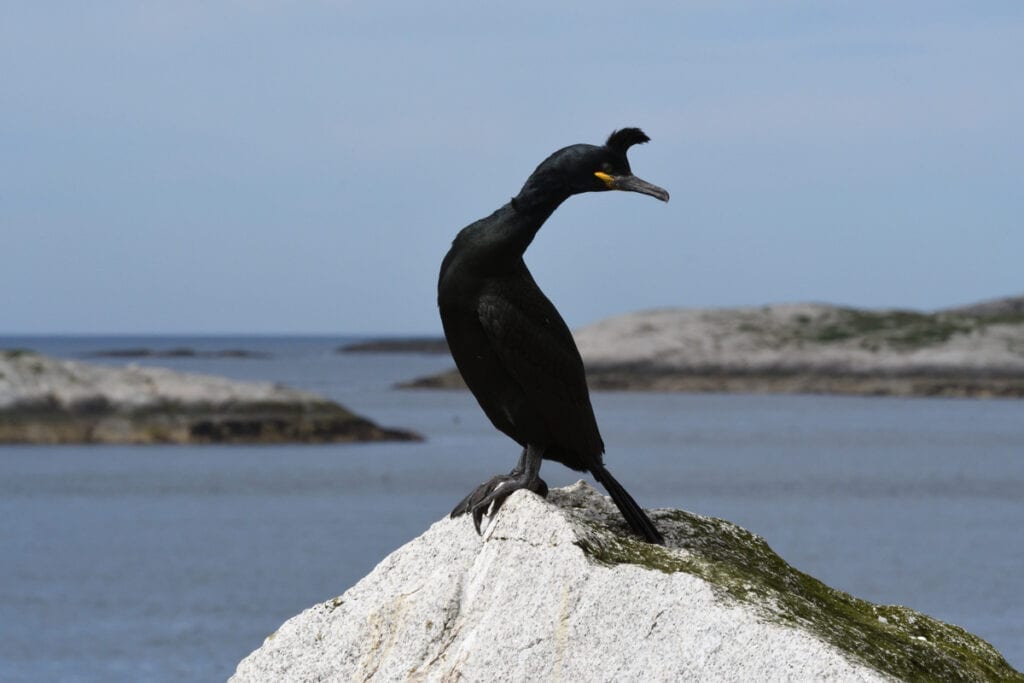European shags choose shallow waters
Researchers have used data loggers to find out where European shags breeding in two Norwegian colonies, Sklinna in Nord-Trøndelag and Hornøya in Finnmark, ranged to catch prey. The results show that the shags primarily chose shallow waters when searching for food.
Data collection with GPSs and dive recorders
In order to manage our seabird populations, it is important to identify what characterizes the areas used by birds in their search for food. This was addressed in two breeding populations of European shag, which is a coastal, piscivorous seabird. Researchers equipped breeding shags from Sklinna and Hornøya with loggers to track data concerning which areas the birds used to search for food, dive depth and dive frequency. The coastal areas surrounding the two colonies, which are both on islands, in the Norwegian Sea and Barents Sea, respectively, are different in terms of seascape structure and availability of fish species suitable as prey for shags. These contrasting features enabled the investigation of how differences in availability of foraging grounds and fish abundance affected foraging behaviour of shags collecting food for their chicks.
Utilizing different habitats
The study revealed that shags in both colonies foraged in shallow areas. The shags at Sklinna hunted saithe in areas with kelp forest, whereas the Hornøya birds foraged in a shallow area with sandy bottom where they could find sandeel. Males dove deeper than the females in both colonies, suggesting that the two genders have the ability to utilize different habitats. The study shows that human activities in shallow areas of the coastal zone may have an impact on breeding European shags and affect males and females differently.
Read the article:
Contact person: Signe Christensen-Dalsgaard, NINA

